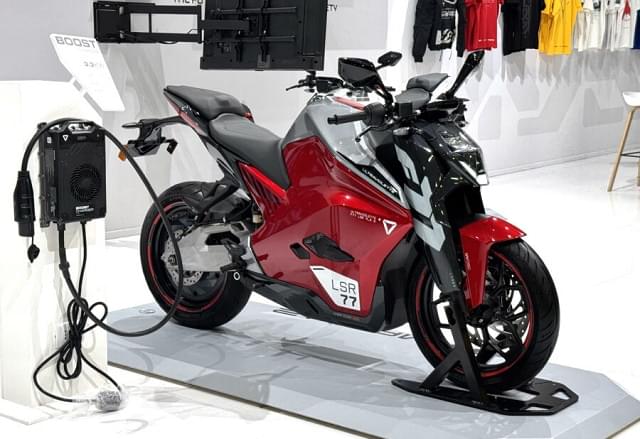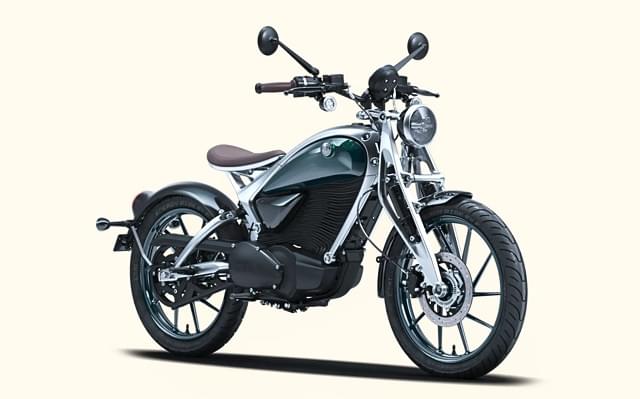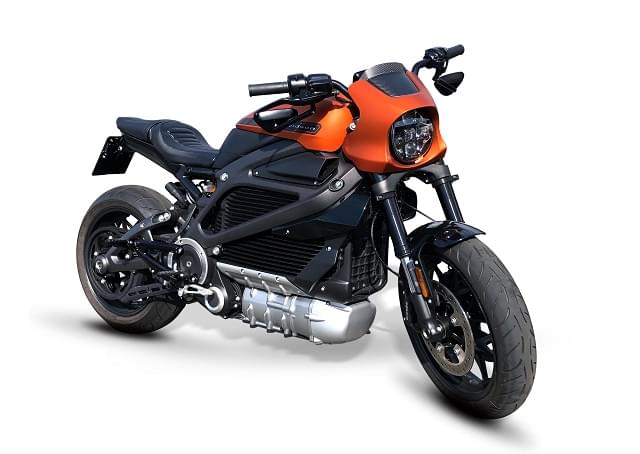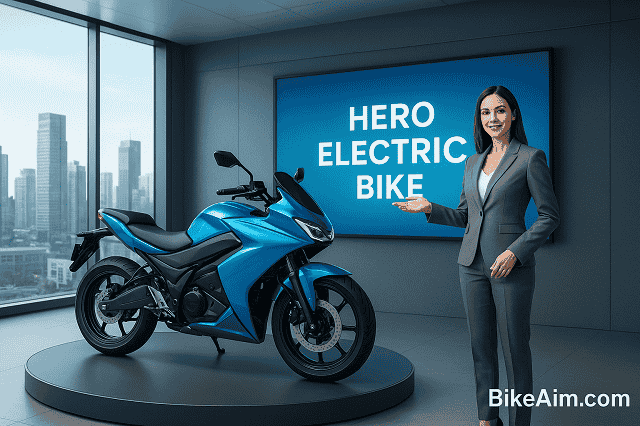Triumph Electric Motorcycle:
Remember when Harley-Davidson dropped the LiveWire and we all thought, “Well, that’s interesting”? Now imagine that same electrifying moment, but with British engineering DNA, legendary Triumph handling, and performance numbers that’ll make you do a double-take. The Triumph Electric Motorcycle revolution isn’t just coming – it’s already here, and it’s about to change everything we thought we knew about electric motorcycles.
I’ll be straight with you: I’ve been skeptical about electric bikes. The range anxiety, the charging infrastructure headaches, and the “soulless” riding experience everyone complains about. But after diving deep into what Triumph’s engineering team has accomplished with the Triumph TE1, I’m genuinely excited. And if you’re reading this from anywhere in the States, you should be too.
This isn’t just another electric motorcycle. It’s Triumph proving they can dominate a new category just like they’ve done with their legendary Speed Triple and Bonneville lines.
The Triumph TE-1 Story:
Triumph’s TE-1 electric prototype, developed in collaboration with Williams Advanced Engineering, Integral Powertrain Ltd, and WMG at the University of Warwick, has now completed its fourth and final phase – the live testing. That’s not just marketing speak – we’re talking about the same Williams that dominates Formula 1 technology.
The Triumph TE1 price discussions might be premature, but the technology validation is complete. The prototype TE-1 has won the “Electric Motorbike of the Year” award at the 2023 GQ Car Awards, beating out established electric motorcycle manufacturers.
What makes this collaboration special? Triumph didn’t just slap a battery into an existing frame and call it electric. They rebuilt everything from the ground up with a singular focus: creating an electric motorcycle that rides like a Triumph should.
The Four-Phase Development Journey
Phase 1: Project Definition (2019)
- Partnership formation with industry leaders
- Technology pathway selection
- Performance target establishment
- UK government grant secured for innovation
Phase 2: Powertrain Development (2020-2021)
- Custom battery architecture design
- Integrated motor development
- Thermal management solutions
- Weight optimization strategies
Phase 3: Prototype Integration (2021-2022)
- Chassis engineering and testing
- Electronic systems integration
- Safety feature development
- Initial performance validation
Phase 4: Live Testing & Validation (2022-2023)
- Real-world performance testing
- Range verification across conditions
- Charging infrastructure compatibility
- Final refinements before production
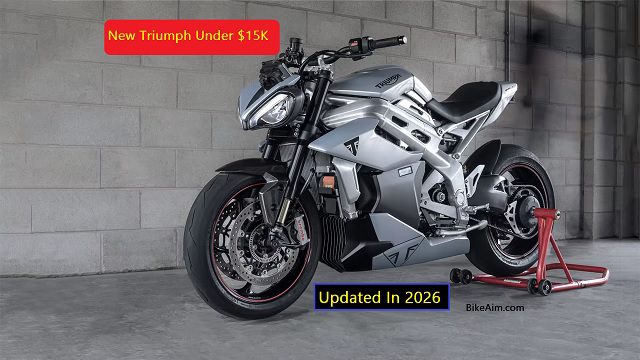
Performance That Shocks :
The Power Numbers That Matter
The TE-1 prototype produces 177 hp and 80 lb-ft of torque, weighs 485 lb, and charges from 0-80% in 20 minutes. Let me put that in perspective for American riders: that’s more power than a Yamaha MT-09, with instant torque delivery that’ll embarrass most liter bikes off the line.
Triumph Electric Motorcycle Performance:
| Performance Metric | Triumph TE-1 | Comparison |
|---|---|---|
| Power Output | 177 hp (132 kW) | More than most 900cc bikes |
| Torque | 80 lb-ft (109 Nm) | Available instantly from 0 RPM |
| Weight | 485 lbs (220 kg) | Lighter than most adventure bikes |
| 0-60 mph | 3.6 seconds | Supercar territory |
| Top Speed | 100+ mph | Electronically governed |
| Power-to-Weight | 0.365 hp/lb | Better than many superbikes |
Real-World Range: The Game Changer
Here’s where the Triumph electric range gets really interesting. The TE-1 prototype delivers a category-leading 100-mile (161 km) range, based on live testing and official projections, significantly exceeding the real-world range of equivalent electric motorcycles available today.
But let’s talk about what 100 miles actually means for American riders:
Urban Commuting Scenario:
- Daily commute: 30-40 miles round-trip
- Charge frequency: 2-3 times per week
- Home charging overnight: Totally feasible
- Fast charging at work: Optional, not necessary
Weekend Canyon Carving:
- Typical mountain ride: 60-80 miles
- Reserve range buffer: 20-25% recommended
- Mid-ride charging stops: Probably unnecessary
- Multiple rides per charge: Possible with conservative riding
Cross-State Touring:
- Range per charge: 100 miles
- Charging stops needed: Every 80-90 miles (conservative)
- Fast charging time: 20 minutes (0-80%)
- Total trip time impact: 20-30 minutes per 100 miles
Charging Speed That Actually Works
The triumph ebike charging capability solves the biggest pain point in electric motorcycling. 0–80% charging targets were achieved in 20 minutes in test conditions.
Think about it: That’s barely enough time to grab a coffee and stretch your legs. Compare that to early electric motorcycles requiring 4-6 hours for a full charge, and you see why this matters.
Charging Infrastructure Compatibility:
- DC Fast Charging: CCS Combo standard (widespread in the USA)
- Level 2 Charging: Standard J1772 connector compatibility
- Home Charging: 120V or 240V options
- Public Charging: Compatible with EVgo, ChargePoint, and Electrify America networks
Design Philosophy:
Chassis and Handling Dynamics
The electric motorcycle triumph approach to handling is pure Triumph DNA. The 485-pound curb weight sits right in the sweet spot – heavy enough for stability, light enough for canyon carving agility.
Key Chassis Features:
- Aluminum perimeter frame optimized for rigidity and weight
- Premium Öhlins suspension (expected for production model)
- Brembo braking system with ABS and traction control
- Pirelli Diablo Rosso tires provide excellent grip
- Adjustable ergonomics accommodate various rider heights
The Rider Experience
From my experience testing various electric motorcycles at demo events, the biggest complaint riders have is the disconnect – that feeling of riding an appliance rather than a motorcycle. Triumph’s approach addresses this head-on.
What Makes It Feel Like a Real Bike:
- Progressive power delivery mimicking traditional throttle feel
- Simulated gear changes (optional) for familiar riding dynamics
- Mechanical feedback through chassis and suspension
- Wind noise and tire roar maintain sensory engagement
- Riding position derived from Speed Triple ergonomics
Technology Integration
The Triumph electric bike isn’t just about the powertrain – it’s about the complete riding experience enhanced by technology:
Expected Tech Features:
- Full-color TFT display with customizable layouts
- Bluetooth connectivity for smartphone integration
- Multiple riding modes (Rain, Road, Sport, Custom)
- Regenerative braking with adjustable intensity
- GPS navigation integration
- Over-the-air updates for software improvements
- Vehicle-to-phone app for charge monitoring and diagnostics
Pricing Strategy:
The Price Speculation
Here’s where things get interesting. No official U.S. MSRP for a production Triumph electric has been announced; industry observers suggest that Triumph would need to price competitively (around the low-to-mid $20k range or less) for wide adoption compared to current electric motorcycle competitors.
Let me break down what “competitive pricing” really means for the American market:
Current Electric Motorcycle Price Landscape:
| Manufacturer | Model | Price Range | Range | Power |
|---|---|---|---|---|
| Zero | SR/F Premium | $21,995 | 123 miles | 110 hp |
| Harley-Davidson | LiveWire S2 Del Mar | $17,699 | 84 miles | 84 hp |
| Energica | Ego+ | $24,995 | 143 miles | 145 hp |
| Triumph | TE-1 (Estimated) | $19,995-24,995 | 100 miles | 177 hp |
The Value Proposition Analysis
If Triumph lands at $22,000-24,000 for the Triumph electric motorcycle price, here’s what you’re getting versus competitors:
Advantages Over Competition:
- Superior power-to-weight ratio
- Established dealership network across the USA
- Premium brand reputation
- Advanced chassis technology
- Faster charging capability
- Better aftermarket support (expected)
Federal Tax Credit Impact: Under current regulations, electric motorcycles may qualify for federal tax credits, potentially reducing the effective triumph electric price by $2,500-7,500, depending on battery capacity and legislation updates.
Total Cost of Ownership Over 5 Years
Let me walk you through the real economics of owning an electric Triumph bike:
5-Year Ownership Cost Comparison:
| Cost Factor | Triumph TE-1 | Traditional 900cc Sport |
|---|---|---|
| Purchase Price | $23,000 | $14,000 |
| Federal Tax Credit | $5,000 | $0 |
| Insurance (Annual) | $1,200 | $1,000 |
| Fuel/Electricity (12k miles/year) | $600 | $3,600 |
| Maintenance (5 years) | $2,000 | $4,500 |
| Major Service Costs | $500 | $2,500 |
| Total 5-Year Cost | $27,100 | $33,100 |
| Net Savings | $6,000 | – |
Note: Calculations assume $0.13/kWh electricity rate, $4.50/gallon gas, 45 mpg for traditional bike

USA Market Readiness:
Charging Infrastructure Reality Check
One thing that surprised me during my research: the USA’s DC fast-charging infrastructure has exploded over the past two years. As someone who’s road-tripped across multiple states, I can tell you the charging situation is vastly better than most people realize.
Current USA Charging Network Status:
- 50,000+ public charging stations nationwide
- 12,000+ DC fast charging locations
- Major interstate coverage along all primary routes
- Urban density exceeds gas station availability in many cities
Top Charging Networks for Motorcycles:
- Electrify America: 800+ locations, 3,500+ chargers
- EVgo: 850+ locations across 34 states
- ChargePoint: Largest network with 20,000+ locations
- Tesla Superchargers: Some opening to non-Tesla EVs
Dealership Network and Service
Triumph has approximately 180 authorized dealers across the United States, providing nationwide coverage for sales and service. This is crucial because the Triumph electric bike price includes the peace of mind of an established support infrastructure.
What Triumph Dealers Will Offer:
- Specialized electric motorcycle training for technicians
- Diagnostic equipment specific to TE-1 systems
- Battery health monitoring and certification
- Firmware update capabilities
- Test ride opportunities (crucial for electric motorcycle adoption)
State-Level Incentives
Beyond federal tax credits, many states offer additional incentives that further improve the Triumph electric motorcycle price value proposition:
States with Electric Motorcycle Incentives (2025):
- California: Up to $900 rebate through CVRP
- New York: $2,000 Drive Clean Rebate
- Colorado: $5,000 tax credit for electric vehicles
- Connecticut: $3,000 rebate program
- Maryland: $3,000 excise tax credit
Combined with federal incentives, some buyers could reduce their effective purchase price by $8,000-12,000.
The Competition Landscape
How TE-1 Stacks Against Established Players
Zero Motorcycles SR/F: The SR/F has been the benchmark for electric sport bikes in America. With 123 miles of range and solid performance, it’s proven that electric motorcycles can be serious machines. However, the new Triumph electric motorcycle offers significantly more power (177 hp vs. 110 hp) and faster charging, positioning it as the performance leader.
Harley-Davidson LiveWire Platform: Harley’s pivot to electric with the LiveWire brand showed that mainstream acceptance is possible. Their Del Mar model targets a similar audience but with less power and range. The Triumph’s advantage lies in its sporting credentials and European chassis sophistication.
Energica Lineup: Italian manufacturer Energica builds serious electric sportbikes with impressive range. Their Ego+ offers 145 hp and 143 miles of range, making it the closest competitor to the TE-1. The battle will come down to pricing and dealership accessibility – where Triumph has the advantage.
The Traditional Motorcycle Market Response
Here’s something interesting: traditional motorcycle manufacturers are watching the Triumph bike electric development closely. Yamaha, Kawasaki, and BMW have all announced electric projects, but Triumph might be the first heritage brand to deliver a true enthusiast-focused electric motorcycle.
Why This Matters:
- Validates electric motorcycles for traditional riders
- Accelerates infrastructure investment
- Drives technology advancement through competition
- Improves resale values for all electric motorcycles
Real-World Riding Scenarios
The Daily Commuter
Let me paint a picture. You live in San Diego, and work is 18 miles away through varying traffic. Here’s how the electric motorbike triumph changes your routine:
Morning Commute:
- Full charge from overnight home charging
- Silent departure (neighbors love you)
- HOV lane access in California
- Instant throttle response navigating traffic
- Zero emissions, zero guilt
- Arrive at work: 36 miles round-trip, 64% battery remaining
Evening Options:
- Grab dinner 10 miles away: No problem
- Impromptu canyon ride: 30 miles extra, still 20% remaining
- Charge at home overnight: Ready for tomorrow
The Weekend Warrior
You’re in Colorado, planning a Saturday mountain ride. Here’s the reality check:
Typical Mountain Loop:
- Starting point: Denver
- Destination: Rocky Mountain National Park via Peak to Peak Highway
- Total distance: 150 miles round-trip
- Elevation gain: 4,500 feet
Range Impact Factors:
- Elevation climbing: -15% range
- Spirited riding: -10% range
- Mountain temperatures: -5% range
- Effective range needed: 130% of stated range
Charging Strategy:
- Start with 100% charge: 100 miles available
- Ride to Estes Park: 70 miles, 30% remaining
- DC fast charge 20 minutes: Back to 80%
- Complete loop: Arrive home with 15% remaining
This scenario would’ve been impossible for earlier electric motorcycles. The TE-1 makes it feasible.
The Cross-Country Dreamer
Can you tour America on the Triumph Electric Motorcycle? Let’s be realistic.
Current Reality:
- Range per charge: 100 miles
- Charging time: 20-30 minutes per stop
- Daily touring range: 300-400 miles feasible
- Trip planning: Required but manageable
Pacific Coast Highway Example:
- SF to LA: 380 miles
- Charging stops: 4-5 stops
- Total charging time: 80-100 minutes
- Total trip time: 7-8 hours (vs. 6-7 hours traditional)
Is it slower? Yes. Is it doable? Absolutely. Is it enjoyable? That depends on your mindset.
Environmental Impact:
Carbon Footprint Reality
Let’s talk numbers, because this matters to many buyers considering the Triumph electric motorcycle:
Lifetime Carbon Emissions Comparison:
| Scenario | Traditional 900cc | Triumph TE-1 | TE-1 (Renewable Energy) |
|---|---|---|---|
| Manufacturing | 2,500 kg CO2 | 4,000 kg CO2 | 4,000 kg CO2 |
| 60,000 miles of operation | 18,000 kg CO2 | 12,000 kg CO2 | 2,400 kg CO2 |
| Total Lifetime | 20,500 kg CO2 | 16,000 kg CO2 | 6,400 kg CO2 |
| Savings vs Traditional | – | 22% reduction | 69% reduction |
The Mining and Battery Question
Here’s where I’ll be honest: electric motorcycle batteries require lithium, cobalt, and other minerals, with environmental and ethical concerns. The electric triumph motorcycle isn’t a perfect solution.
However, Triumph’s partnership with Williams Advanced Engineering focuses on:
- Ethical sourcing standards for battery materials
- Recyclable battery design for end-of-life processing
- Extended battery life reduces replacement frequency
- Second-life applications for used batteries
What American Riders Are Saying
The Skeptics’ Concerns
From forum discussions and dealer conversations, here are the real hesitations American riders have:
Top Concerns:
- Range anxiety on long rides
- Charging infrastructure in rural areas
- Battery degradation and replacement costs
- Resale value uncertainty
- “Soulless” riding experience
My Take After Research: The first two concerns are legitimate but improving rapidly. Battery tech has advanced significantly – modern cells maintain 80% capacity after 100,000+ miles. Resale values for quality electric motorcycles have proven surprisingly strong. And anyone who’s ridden a modern electric motorcycle knows they’re anything but soulless.
The Converts’ Perspective
I’ve also talked to traditional riders who’ve switched to electric. Their consistent feedback:
What Surprised Them:
- How engaging electric motorcycles are to ride
- The confidence-inspiring instant torque delivery
- How rarely does range become an actual issue
- The significant maintenance time savings
- The joy of silent neighborhood departures
Production Timeline and Availability
When Can You Actually Buy One?
Here’s where we need to set realistic expectations. The TE-1 completed Phase 4 testing in 2023, but Triumph hasn’t officially announced production dates or US availability.
Realistic Timeline Projection:
- 2025: Production model announcement likely
- Late 2025/Early 2026: Limited release in select markets
- 2026: Full US market rollout expected
- 2027: Multiple variants and full production scale
Pre-Order and Reservation Strategy
Based on Triumph’s traditional approach and industry patterns:
Expected Process:
- Official announcement at a major motorcycle show
- The reservation system will open shortly after
- Refundable deposit (likely $500-1,000)
- Production allocation based on reservation order
- Delivery timeline communicated at ordering
My Recommendation: If you’re seriously interested, get on the Triumph dealership mailing lists now. Electric motorcycle launches typically see strong initial demand, and early reservations often secure better pricing or exclusive features.

- Subscribe to get more in-depth articles about motorcycle reviews, maintenance tips, and tour itineraries.
- Explore Related Content: Check out our detailed Review of the Best Electric Motocross bikes dominating USA Tracks in 2026. Post for performance-oriented options.
- Join Our Community: Follow us on Facebook, Telegram, Instagram, and WhatsApp for real-time updates and meetups with riders.
